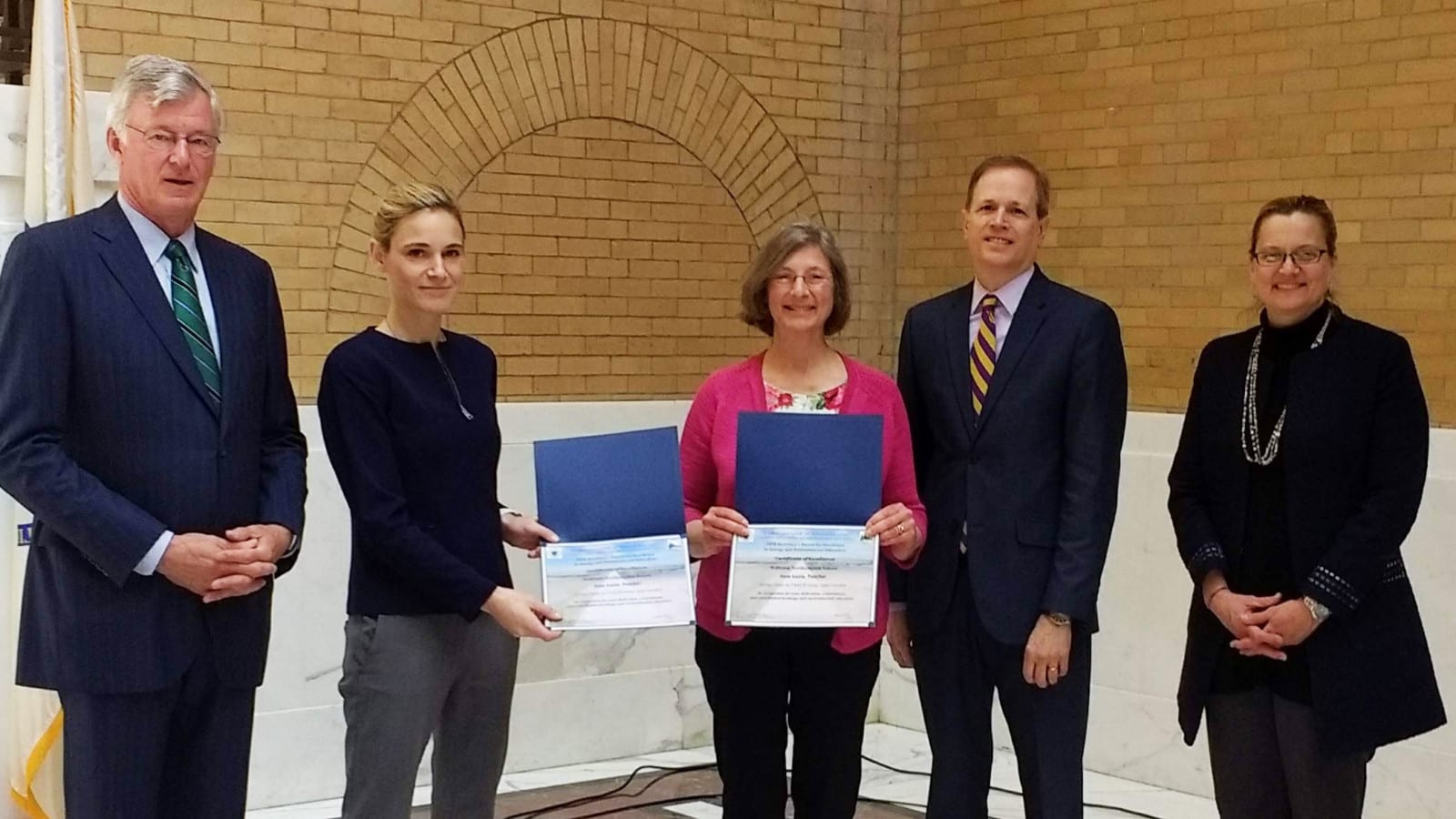At a State House ceremony, Energy and Environmental Affairs (EEA) Secretary Kathleen Theoharides this week honored 32 energy and environmental education programs at Massachusetts schools and nonprofits as part of the 25thAnnual Secretary’s Awards for Excellence in Energy and Environmental Education. Among them was Jane Lucia, Williston Northampton School science teacher, for her program, “Buds, Leaves and Global Warming.”
Lucia, pictured above, center, sends Williston students outside on campus to observe trees and record data on the timing and number of leaves that have emerged in spring. They do the same in the fall to record the date of color change and leaf drop. This way they are tracking how long the leaves are on the tree each year. The timing changes annually, related to weather conditions, which contribute to, and are sometimes driven by, long term climate trends, according to Harvard Forest Schoolyard Ecology Coordinator Pamela Snow, who worked with Lucia and nominated her for the award. Students, in this way, are keeping records of how long the growing season is each year and if and how that is changing over time. Harvard Forest Ecologist John O’Keefe P’22 has been tracking the growing season at Harvard Forest for 29 years. He has documented great variability from year to year, but overall has viewed an approximately seven-day increase in the growing season over that time.
These observations helps us to see if climate change is impacting the length of our local growing season, Snow said. If it is, she said, we can expect that some trees will have leaves on for longer periods, which can have various impacts. These conditions can help trees grow faster and store more carbon, which will offset carbon emissions and related warming. They can also be troublesome, as other organisms, such as leaf eating caterpillars and the birds that eat those caterpillars, need to adapt their hatching and migration timing in order to keep the food web functioning smoothly. Change in timing for any of these organisms affects the timing for all of them, in that are linked by that food web.
“The project engages students in collecting data that contributes to an ongoing data base—their data is published!” said Lucia. “I love this project because it is authentic science, helping the students realize that scientific information comes through observation. Someone (and many someones) have to ‘be there’ for science information to be credible.”
She continued, “Not only are the students helping to answer a larger question but they have access to a large data set that they can understand and interpret. This provides opportunity for students to ask additional questions for which they can search the data and practice their critical thinking skills to draw reasonable conclusions. The study of trees is a perfect launch pad for many topics in our life science curriculum.”
“Our community garden acts as an academic ‘playground’ for student exploration in the life sciences,” Lucia added. “When students are in pursuit of answers to their own questions, true learning happens. The garden provides opportunities for observation, engineering, problem solving and community connections. As for improving the world, people are more likely to care for what they know and understand. Experiencing soil organisms doing their job goes a lot further toward creating a passion for this valuable resource than simply being told about them or watching a video.”
“The innovative environmental and energy educational programs honored today prepare students for academic and professional success and show them ways to make positive changes in their communities and schools,” said Lieutenant Governor Karyn Polito. “Thank you to all the schools and nonprofits that have incorporated environmental education in to their curriculum, helping to improve students’ problem-solving skills and create lifelong passions for science and the environment.”

